I’ve recently returned from a science traveling expedition to Argentina. The trip was an incredible experience and I’ll be writing about it more here and elsewhere over the weeks. You can already read about drinking mate and other highlights beginning here (scroll for more).
The trip was a long time coming. I first met my friend Pablo in Connecticut in 1980, where we joined a dozen other students for a semester at the Bermuda Biological Station for Research. We’ve been friends ever since despite the distance, and he’s been inviting me to visit him in his native Argentina for many (many) years. This year I finally did it.
After two flights and more than 14 hours in the air, Ru and I arrived in Buenos Aires, the first time south of the equator for either of us. We would go a lot further south before we were finished, but first there was two rainy days in the capital. Buenos Aires is more European than South American, and seemed to want to copy other cities more than innovate. Then the real trip began. We flew to Bariloche. [Hover over each stop in the map below, and click on the arrow button to follow the travel route.]
Bariloche, to be exact, is San Carlos de Bariloche, in Rio Negro Province, the northernmost part of Patagonia. Pablo has been a Professor at the National University there for the last 25 years, where he is Director of the fisheries resources group. We arrived in the late morning of an extremely windy day in late-summer, a refreshing change from the long, cold, snowy winter of February back home. One night to relax, then off to begin a road trip that would end up being over 3500 kilometers.
I’ll talk more about them in future posts, but Bariloche and environs boasts two amazing geological features – mountains and lakes. The views were extraordinary. And yet, they were only a preamble to what we were about to experience.
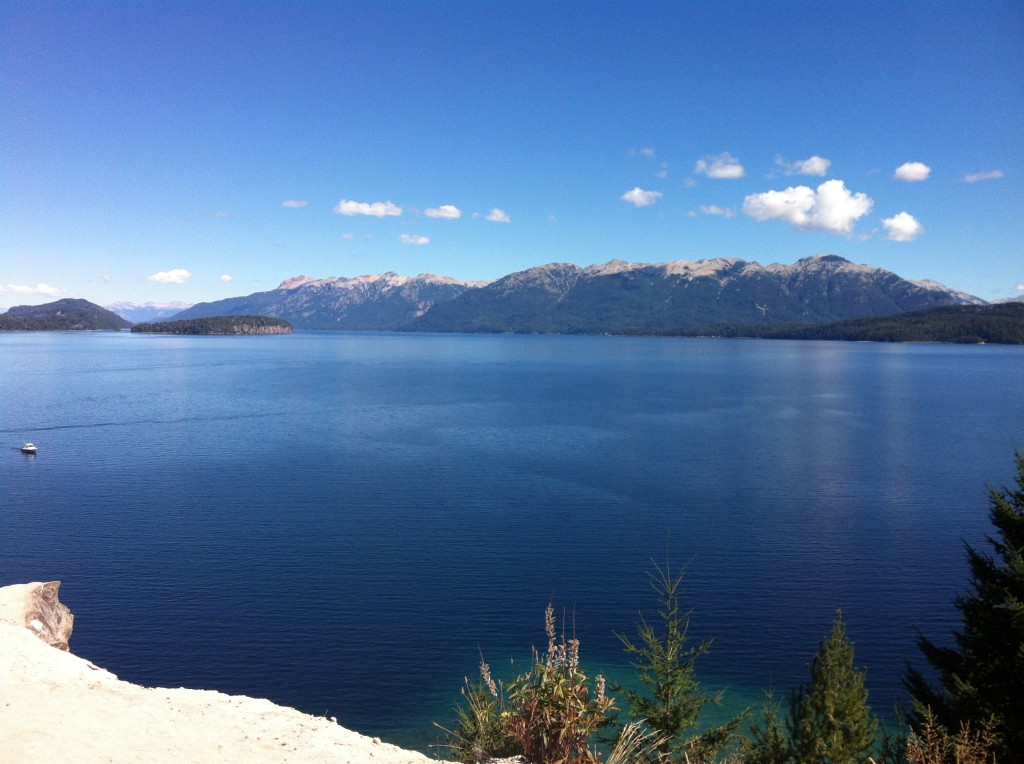
Bariloche – Nahuel Huapi Lake
With short stops in the scenic towns of El Bolson (“the best ice cream in the world”) and Esquel, we drove some of the most inhospitable “roads” in Argentina. Called a highway, much of Ruta 40 is actually a long gravel road. Long as in we drove a couple of hundred kilometers on piles of rocks in which tracks were our only guide. Pablo’s previous explanation that he, like most Patagonians, had installed metal plates on the underside of his SUV, suddenly became all too rational. Besides the constant clanging of rocks, the road would often detour into oblivion. It reminded me how whiny we Americans can be over a few potholes. Perspective is everything.
In any case, we finally arrived at Los Antiguos after midnight, then couldn’t find our lodgings. Eventually the owner came to get us and we settled in for a short, but comfortable, rest before our next day’s adventure. After much awe at the surrounding mountains and lakes we headed over to the amazing colors of the rocky desert, where we stayed the night at the Estancia Cueva de las Manos (The Cave of the Hands Ranch).
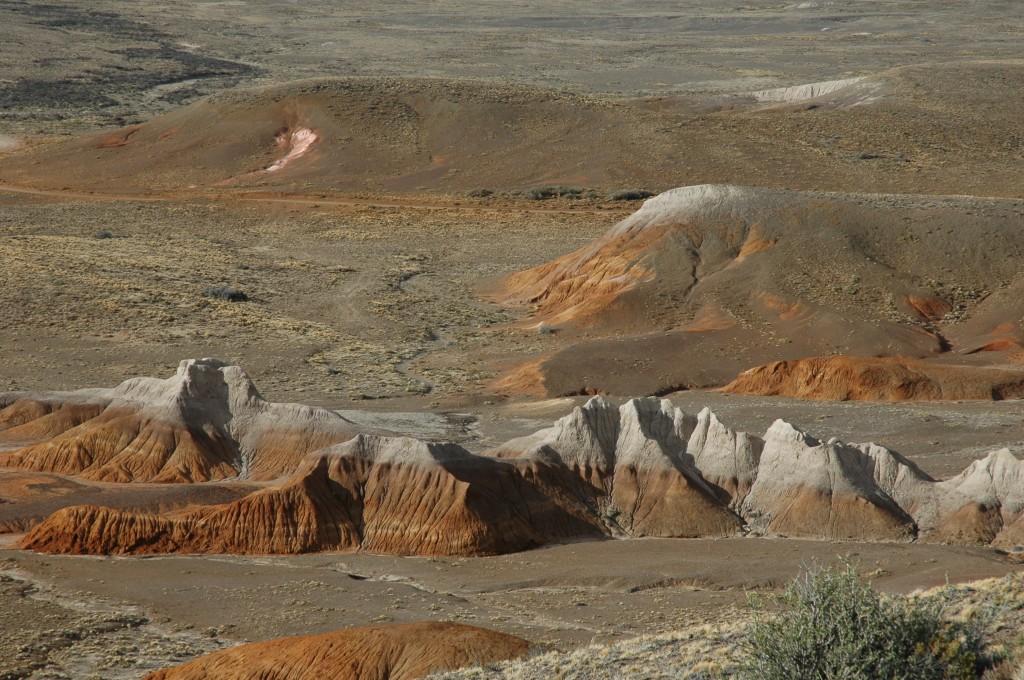
Near Cueva de las Manos
We visited the actual caves the next morning. After a long 17-km drive on gravel roads, gawking at choiques (ostrich-like birds) and guanacos (llama-like camelids) along the way, we hiked down, then up, a deep valley to reach the amazing caves full of painted hands.
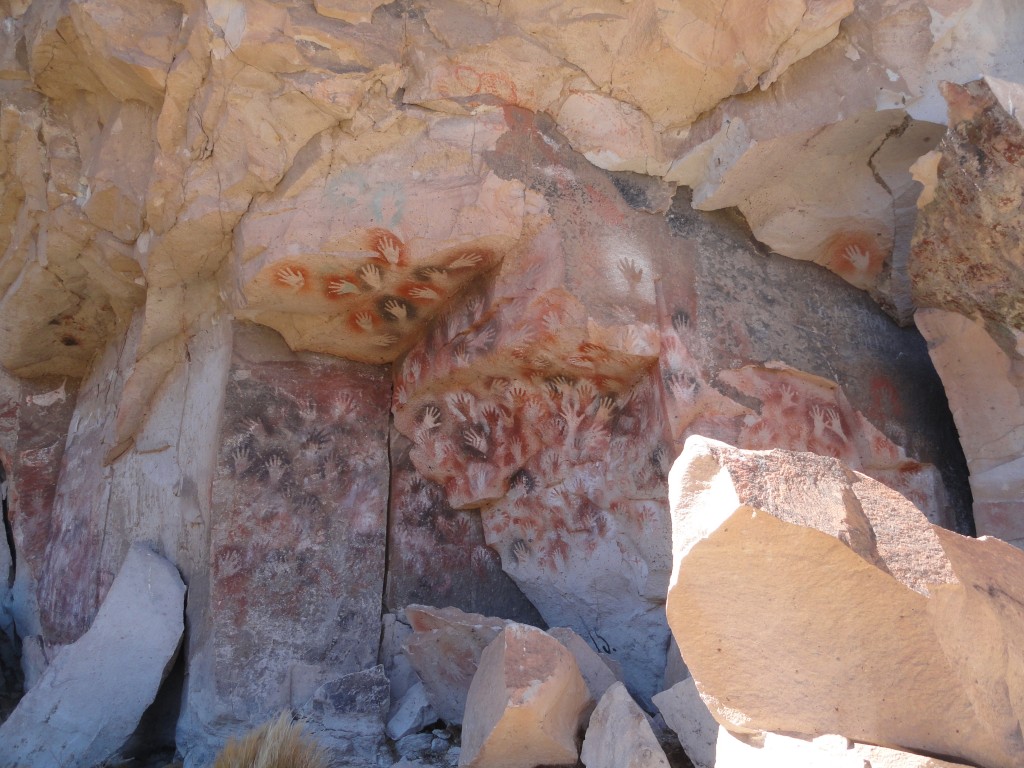
Cueva de las Manos
Another long drive split between paved and gravel roads brought us to El Chalten, the “Trekking National Capital” of Argentina. Dominating the skyline is Mount Fitz Roy, named after the captain of Darwin’s HMS Beagle. The five of us hiked over 5 kilometers, the last 1.4 km of which were essentially vertical, to reach the picturesque lake below the peak. Four of us hiked all the way back. Pablo hiked back all but the last couple of kilometers, after which he was carried out on a stretcher. But that’s a story for another post.
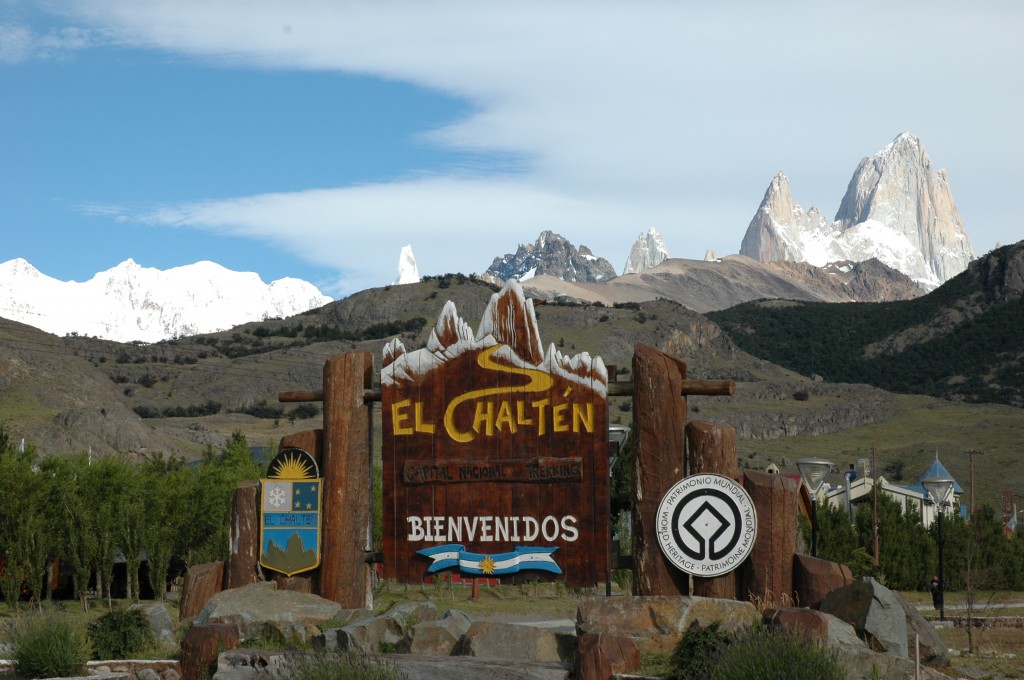
Mt. Fitz Roy is top right.
The next day we drove from El Chalten to El Calafate (well, Pablo’s daughter drove, I rode in the ambulance with Pablo), then spent a much needed relaxed night in a dormis, complete with an Argentine-style lamb cooked over an open fire. Then, the glacier.
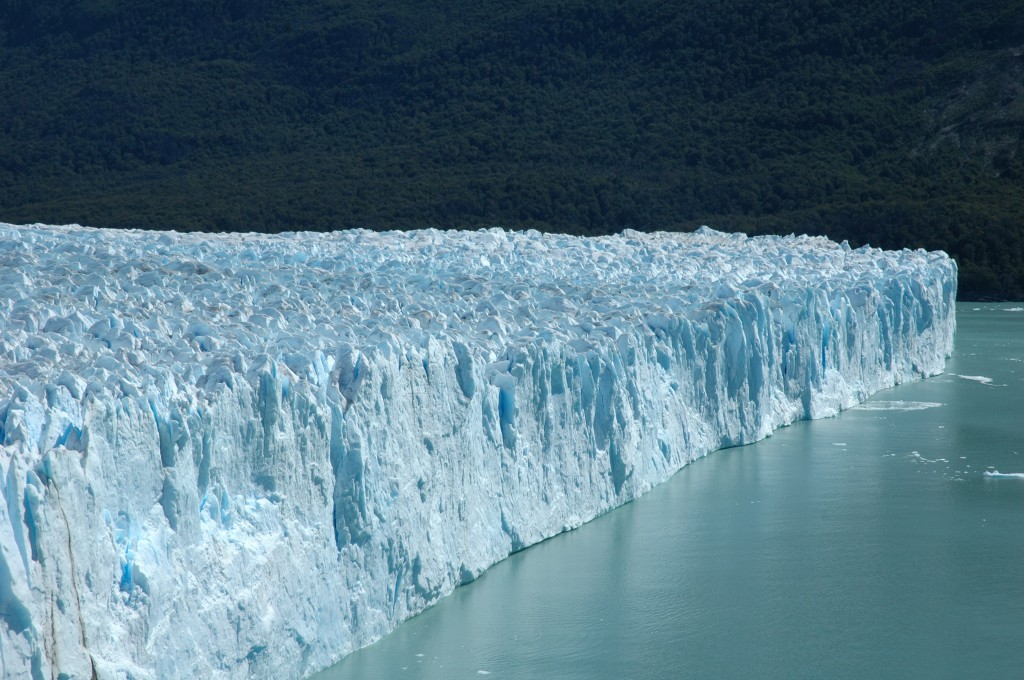
Perito Moreno glacier
The Perito Moreno glacier may be the most famous glacier in the world. It’s massive. And better yet, it is situated such that it splits two lakes and pushes up against an accessible island where visitors can get up close. As the glacier retreats slightly during the summer melt, it provides a front-row seat for thousands of people to see huge chunks of ice calving off the face. A truly unforgettable experience.
All of this so far occurred in just one week of traveling. The final week was less busy – a long two-plus day drive across lower Patagonia, up the coast, and back to Bariloche for several days of local flavor. Twice I came close to going into Chile (within a few kilometers at one point), but that pleasure will have to wait until my next visit.
And there will be a next visit. Pablo and I have begun discussing possibilities that would result in more frequent visits on my part. Besides seeing Chile I also still need to get to Argentina’s Iguazu Falls, the Mendoza wine region (I love malbec), and Ushuaia (the southernmost city in the world).
Come back for more detailed stories and photos from the trip. You won’t want to miss them.
David J. Kent is an avid traveler and the author of Tesla: The Wizard of Electricity. You can order a signed copy directly from me, download the ebook at barnesandnoble.com, and find hard copies exclusively at Barnes and Noble bookstores.
Follow me by subscribing by email on the home page. And feel free to “Like” my Facebook author’s page and connect on LinkedIn. Share with your friends using the buttons below.











Bringing back the memories.. We had such a great time with Pablo and his two wonderful daughters!
Glad you had a great trip. So did I. 🙂
That cave of painted hands is fascinating. Wish I new more about it.
I have another post (I think) where I talk more about them.
Concurring with Pam. It seems to me that painted hand-shadows (apparently made by blowing the pigment out of one’s mouth) are found all over the world. Like to know where your other link is…?
And of course, I found the link to the article. 😉
Pingback: Revisiting Patagonia | Science Traveler
Fantastic trip! I think one of the best ways to visit a new place is just as you did here, by having a local resident guide. My first ice axe was a 75cm Camp-Interalp “Cerro Torre” (among the first metal-shaft ice axes produced). I became fascinated with its namesake (even once wrote something that featured the Cerro Torre to make a point about the intrinsic value of a challenge). The Cerro Torre is an amazing 4,000 spire of rock located west of Fitz Roy on the Argentina/Chile border. Some day, I want to see it — ideally, I’d like to hike up to its east face.
We were supposed to go the next day to Cerro Torre for a couple days camping and hiking. Unfortunately, Pablo broke his ankle on the way down from Fitz Roy and that changed our plans dramatically. It’s definitely on my list for a return visit.
Just back from the high-country…Wow! You’ve got me thinking, and scheming now. Peru and Machu Picchu have been on a long-term list. I’m starting to see an extended trip.
Broken ankle in the hills…no bueno! My sympathies to Pablo. I once dislocated a knee skiing deep snow in the backcountry — why I now use releases on my tele skis.
Machu Picchu is on my list for 2016. Galapagos probably for 2017.
Pablo’s ankle certainly extended our day as we hiked out to the nearest hostel and called a rescue squad to come get him. Luckily (and ironically) we were only a couple of kilometers from the end on relatively flat ground and his daughter (who stayed with him while we hiked out) was in training to be a firefighter. Turned out to be good training.